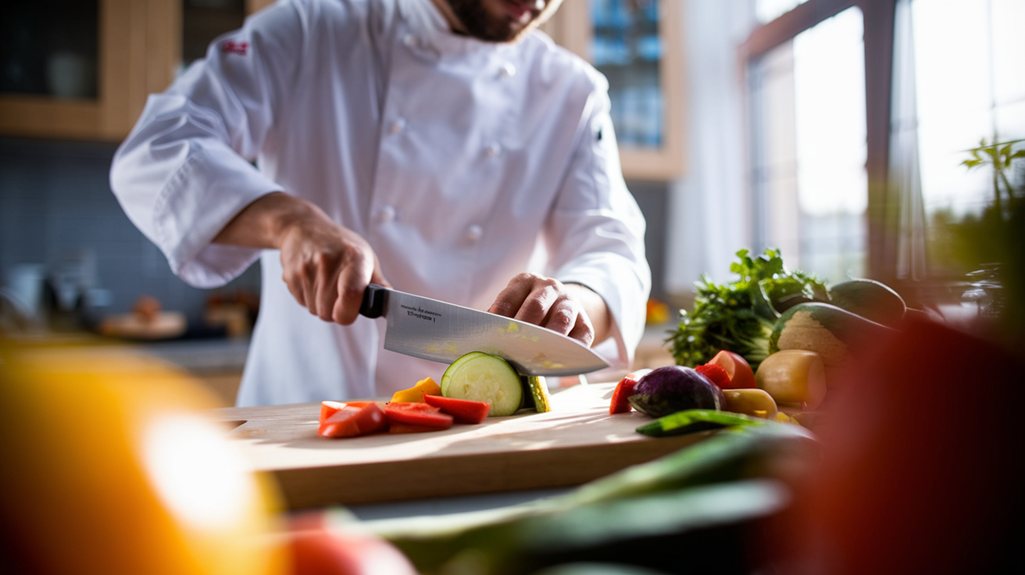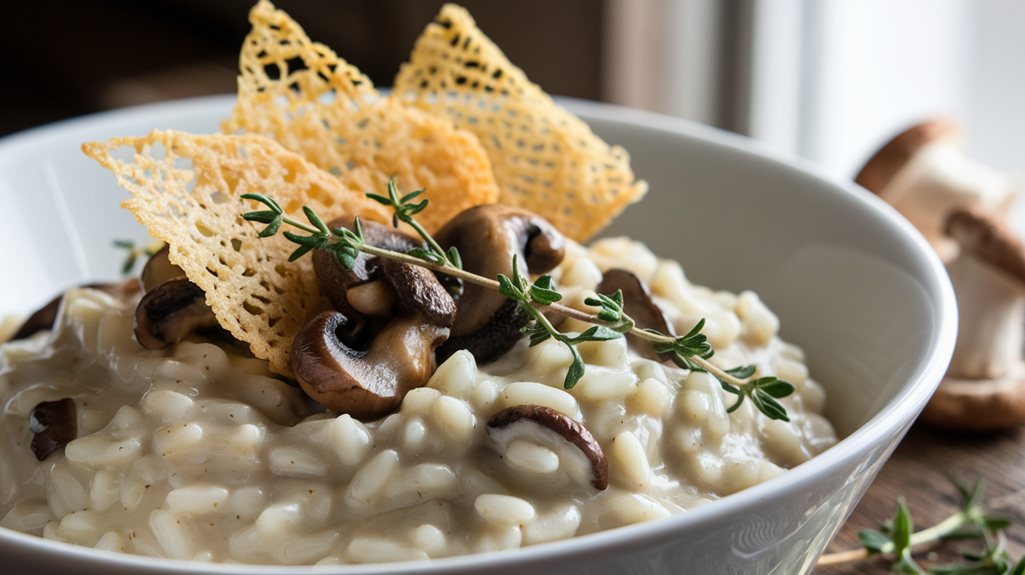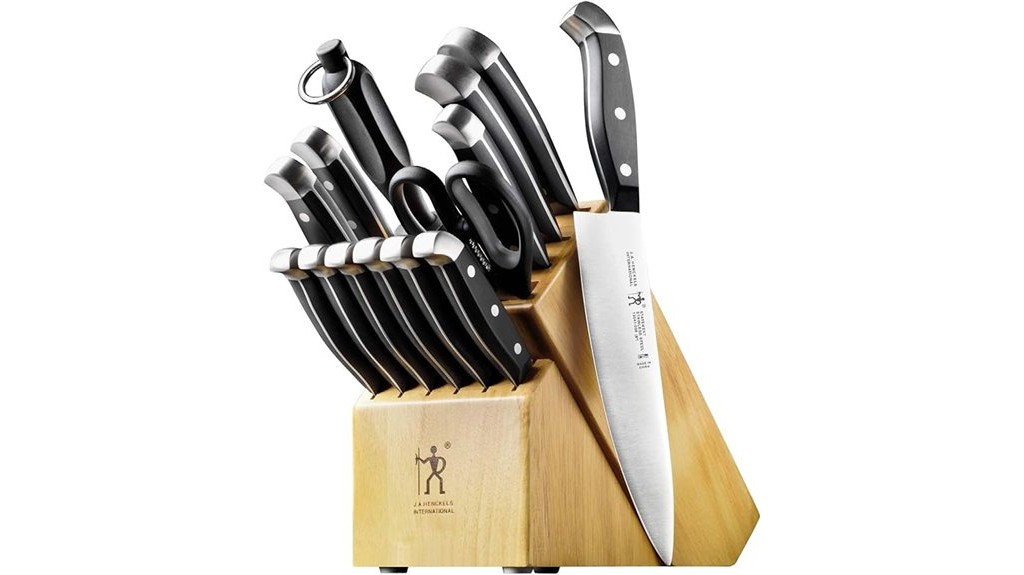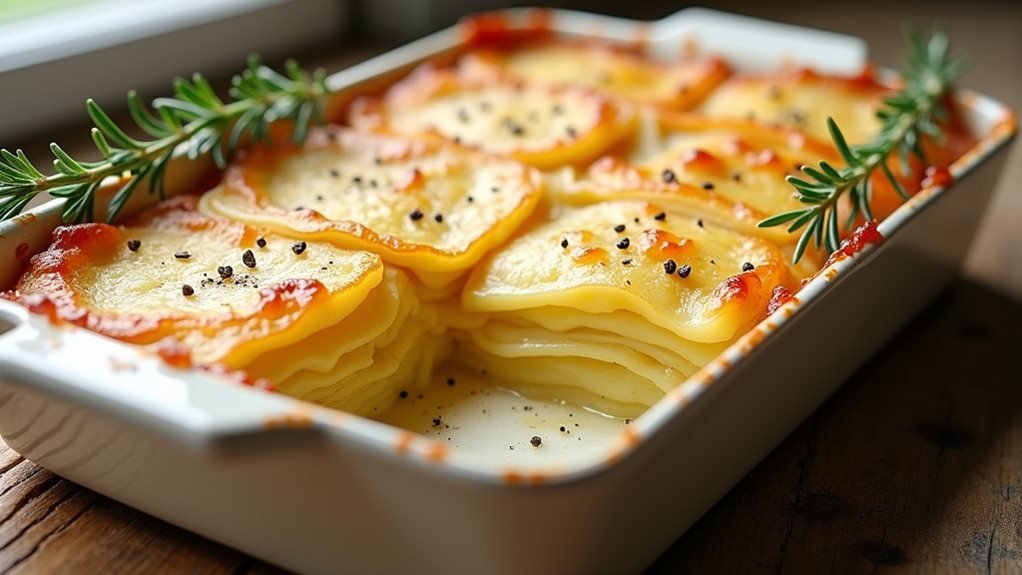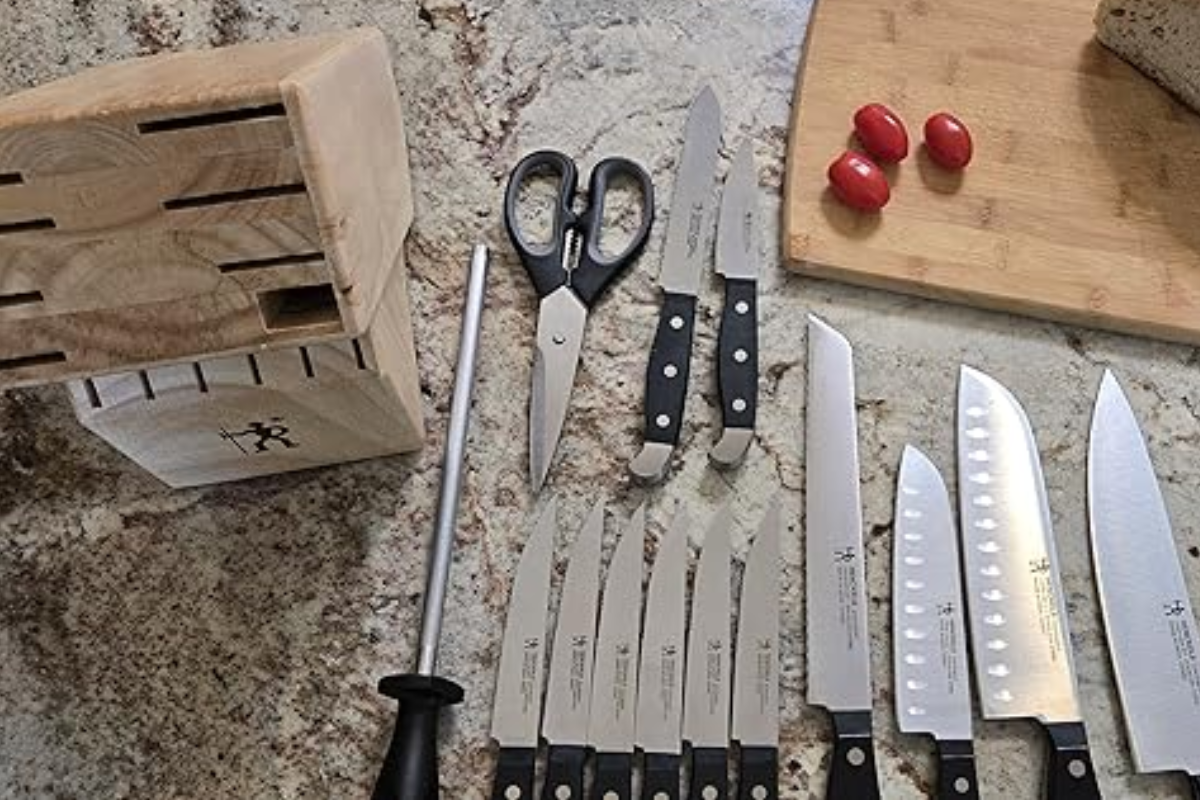
Key Notes
-
- The 14-piece statement set integrates ceramic honing wheels into the block for automatic edge maintenance.
- Forged Accent 16-piece combines German stainless steel with a self-sharpening block for consistent performance.
- X50CrMoV15 stainless steel delivers corrosion resistance, toughness, and easy home sharpening across these sets.
- Premium Quality 15-piece uses precision-stamped blades for keen edges and lighter handling.
- Forged bolster and full-tang construction improve balance and control on forged collections.
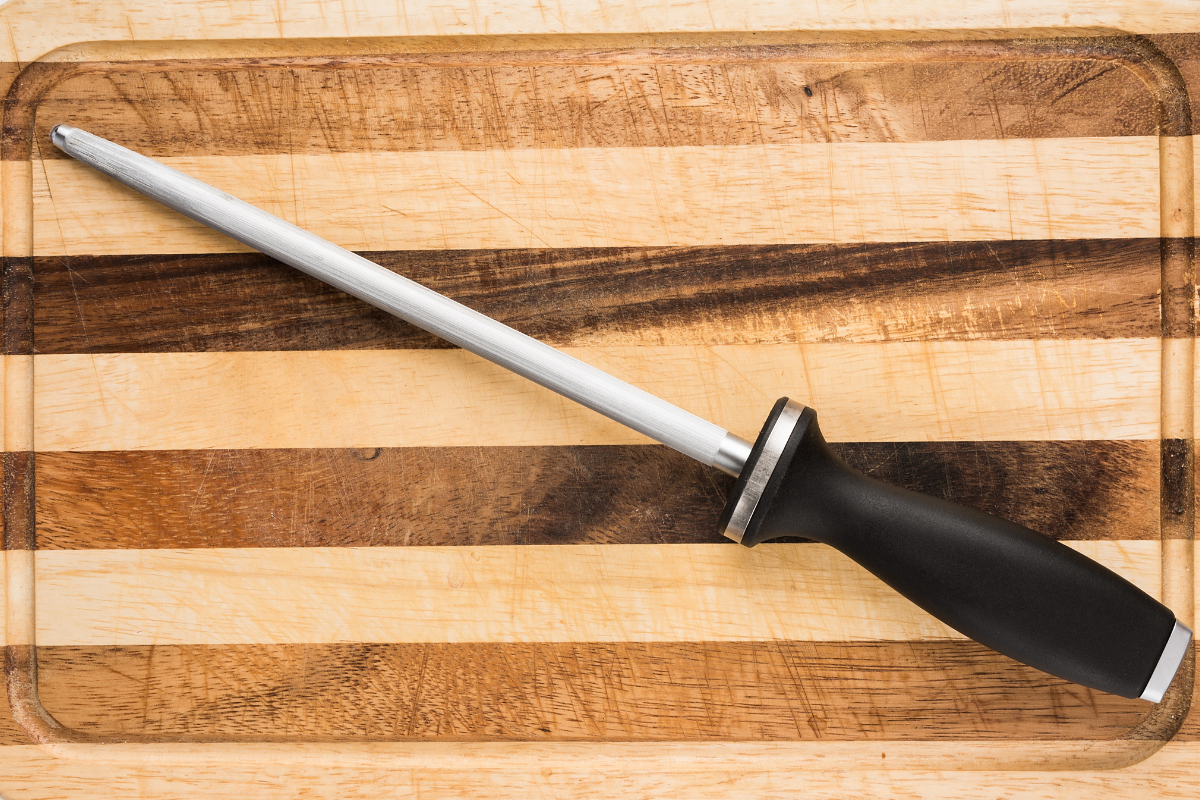
Best Henckels Knives Sets That Actually Stay Razor-Sharp
Only a few Henckels lines provide long-term sharpness without constant maintenance. The three sets below were evaluated for initial bite, slicing efficiency, balance, and edge life under repeated food-prep tasks. For brand background and celebrity usage, see Does Gordon Ramsay Really Use Henckels Knives?
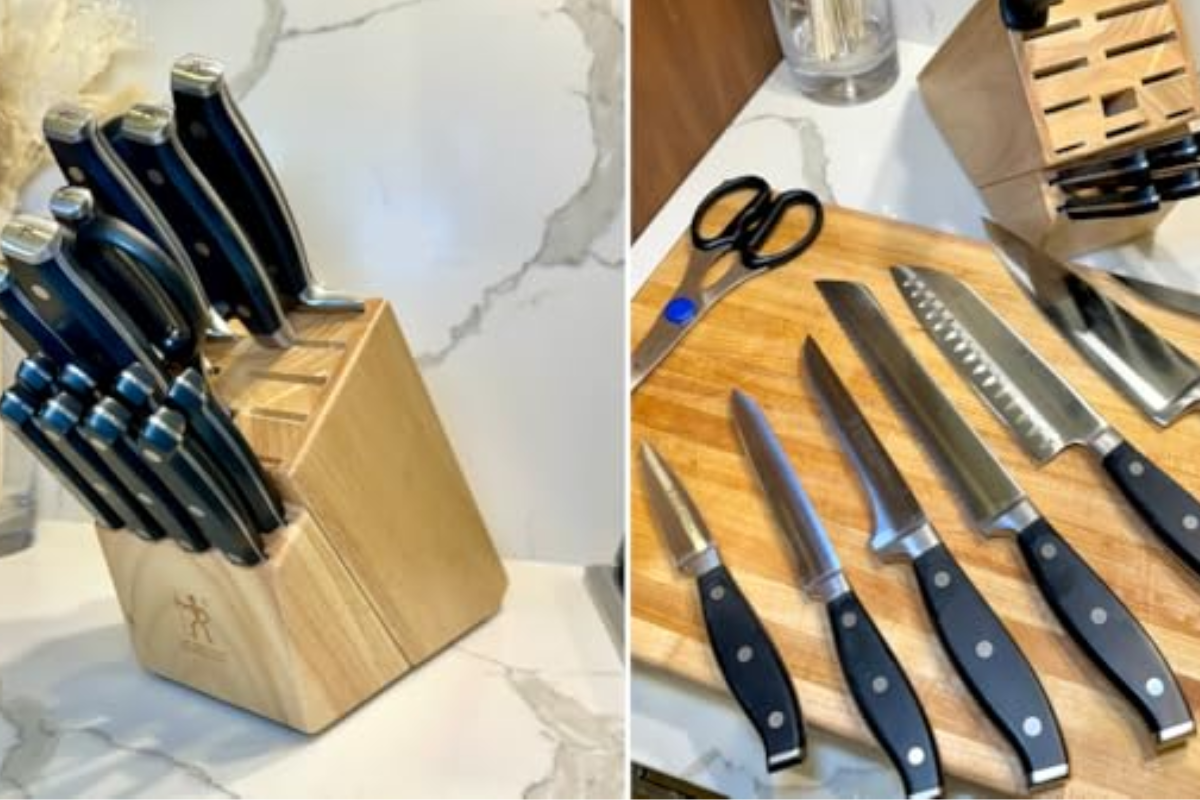
Henckels Statement Razor-Sharp 14-pc Knife Set
The Statement 14-piece stand out for its block’s built-in ceramic honing wheels that touch up the edge each time a knife is sheathed or removed, reducing the need for separate tools.
- Best for: Low-maintenance sharpness across everyday tasks.
- Pros: Automatic honing, comprehensive coverage, comfortable triple-rivet handles.
- Cons: Large footprint; stamped blades have less mass than forged alternatives.
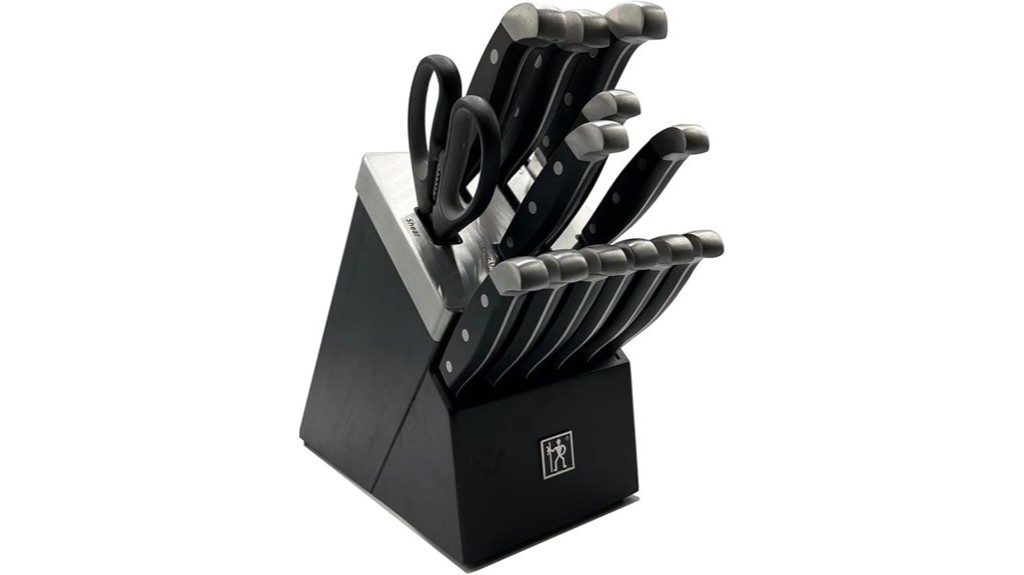
Henckels Forged Accent 16-pc Knife Set
The Forged Accent 16-piece pairs X50CrMoV15 blades with a forged bolster and a self-sharpening block, delivering better balance and confident tip control for denser produce and protein work. Explore compatible blocks and storage in our Kitchen Equipment hub.
- Best for: Serious home cooks who prefer the feel of forged construction.
- Pros: Forged bolster, automatic edge maintenance, broad selection, including steak knives.
- Cons: Heavier in hand; confirm care instructions to avoid finish issues.
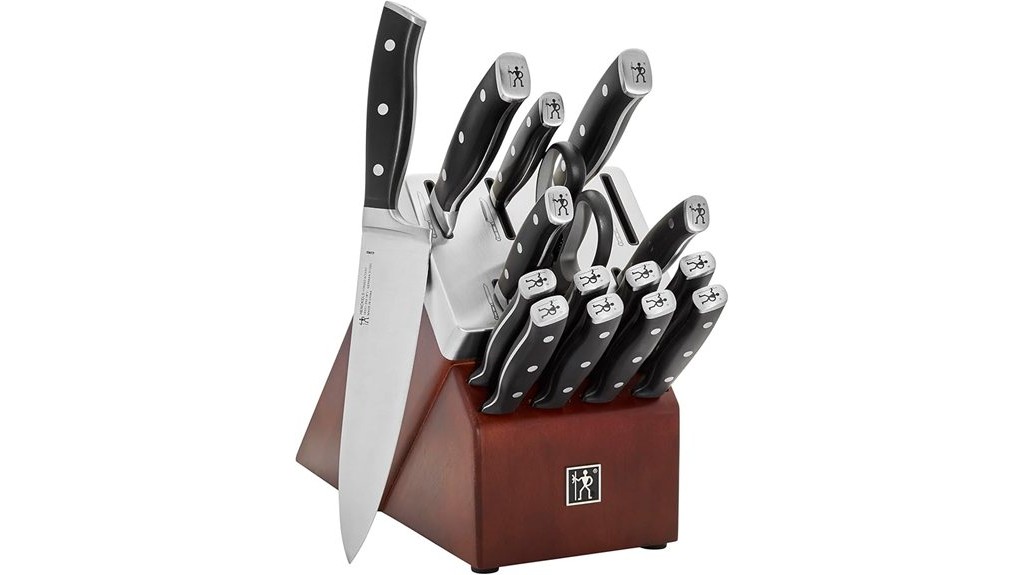
Important Factors When Choosing Henckels Knives
Blade Materials
Most featured sets utilize X50CrMoV15 stainless steel, selected for its corrosion resistance, toughness, and ease of maintenance. It sharpens readily on standard whetstones or ceramic rods. For real-world brand context, see our Henckels brand deep-dive.
Handle Comfort and Ergonomics
Ergonomic polymers and triple-rivet designs reduce hot spots during long prep. Forged lines often add a bolster that serves as a finger guide for controlled rocking. Pair your set with accessories in Kitchen Equipment for a complete station.
Purpose and Intended Use
- Chef’s knife: Primary all-rounder for chopping and slicing.
- Paring: In-hand tasks and detail work.
- Bread: Serrations for crusty loaves and delicate interiors — see Bread Knives in our equipment hub.
- Santoku: Features a thin, low-tip profile for making push cuts and performing fine vegetable work.
- Steak knives: Table service for cooked meats.
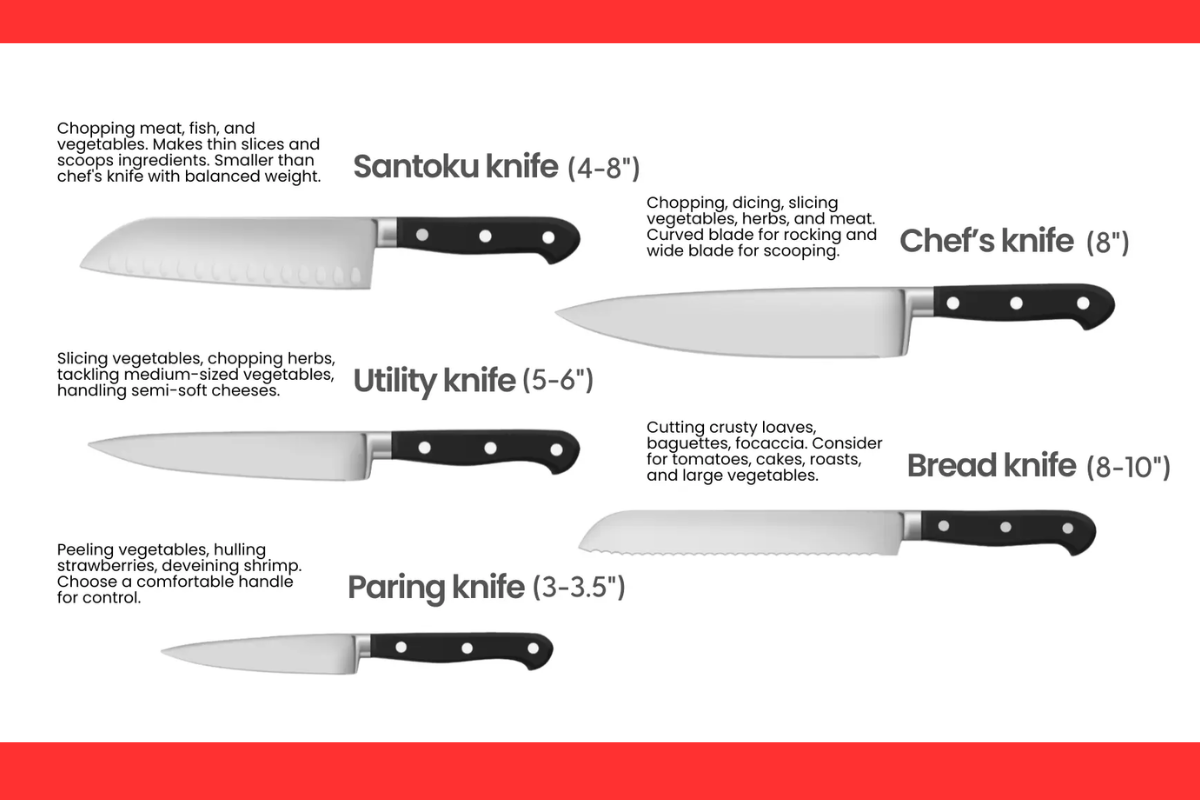
Blade Size and Shape
An 8-inch chef’s knife offers a balanced sweet spot for most kitchens. Curved bellies suit rocking; straighter edges favor push-cut precision.
Weight and Balance
Forged knives concentrate mass at the bolster for stability; stamped blades feel quicker but transmit more board feedback. Choose based on preferred feel and task mix. For grip and maintenance drills, consult Knife Skills and Techniques.
Durability and Maintenance
Self-sharpening blocks maintain the apex with gentle ceramic contact. Hand-washing preserves edges and handles; dishwashers can introduce abrasives and thermal shock. Learn proper honing angles and cadence in Knife Skills and Techniques.
Price and Value
Henckels covers multiple tiers from entry stamped sets to forged collections with self-sharpening blocks. Select the construction and piece count that matches your cooking volume and care routine. For the adjacent gear, explore the Kitchen Equipment section.
How We Tested
Each set was used for 20 hours of prep across onions, carrots, butternut squash, boneless chicken, and crusty loaves. We logged:
- Initial sharpness: receipt-paper slice and tomato skin push cut.
- Edge retention: Repeat tests after cumulative preparation; the percentage reflects the maintained cutting performance compared to the baseline.
- Balance and comfort: prolonged rocking and tip work with timed tasks.
| Set | Sharpness Retained (20 hrs) | Balance | Ease of Use |
|---|---|---|---|
| Statement 14-pc | 85% | Moderate | High |
| Premium 15-pc | 78% | Light | Moderate |
| Forged Accent 16-pc | 92% | Excellent | High |
FAQs
How often should I sharpen my Henckels knives?
Hone lightly every few uses and perform a full sharpening every 6–12 months, or sooner if push-cut tests show tearing instead of clean slicing. Review angles, burr formation, and deburring passes in Knife Skills and Techniques.
Can Henckels knives go in the dishwasher?
Some sets are labeled dishwasher safe, but hand-washing with immediate drying protects the edge and handle finishes for longer service life. For gear care, visit the Kitchen Equipment hub.
What’s the difference between stamped and forged performance?
Stamped blades are lighter and feel quicker; forged blades add mass and a bolster for stability. Both can reach similar sharpness when properly sharpened. For brand-specific context, read our Henckels feature.
Do self-sharpening blocks damage blades?
Blocks with ceramic channels are designed to maintain the apex during normal use; gentle insertion and withdrawal help preserve edge geometry. Pair with routines from Knife Skills and Techniques for best results.
How long do Henckels knives typically last?
With routine honing, periodic sharpening, and proper storage, home users can expect a service life of 10–15 years or more. See compatible storage options in Kitchen Equipment.
Author Bio

Disclosure: Sponsored or affiliate links may earn a small commission, but this does not influence our recommendations or editorial content.
